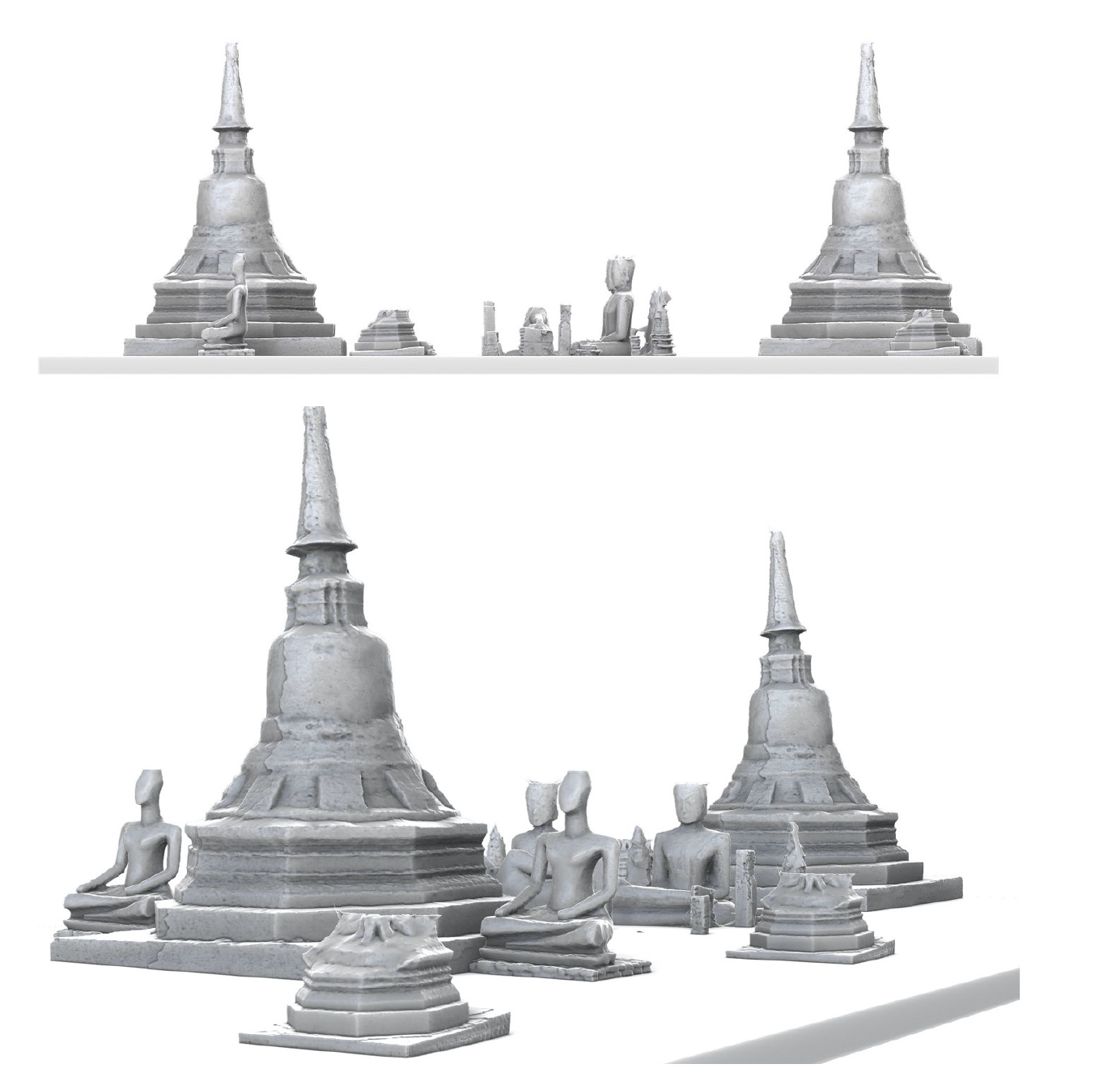Low-Cost 3D Scanner for Creating Virtual Game Scenes - A Case Study of Developing Virtual Kamphaeng Phet Historical Park Scene
DOI:
https://doi.org/10.69598/decorativeartsjournal.1.11-34Abstract
Currently, there are issues with teaching games and a 3D animation. The cost of hardware or software is quite high. Because there is insufficient equipment for the number of students, the students are unable to fully access and learn the equipment. A 3D scanning is the one expensive device. Therefore, the researcher research and study the process of a 3D scanner which same as creating a 3D model through photos called close-up survey (Photogrammetry) of engineering applied to modeling and measuring buildings, engineering structures, forensic scenes and mine accidents, archaeological artifacts, film sets. Creating a 3D model through photographs is called close-up survey Photogrammetry is one of the new methods of digitizing real-world objects to appear in the virtual world. The scope of study is to use a picture from a mobile phone with computer software. RealityCapture is a computer software which can convert a picture to a point could or a 3D model that retains its appearance as close as possible to the real object then arrange the lines to make the file smaller and finally use it in games or 3D animation. The aim of this research is to find the most suitable method for creating the low-cost virtual 3D models of objects in real-world environments. Convert to usable data via mobile phone The objectives are: 1) to collect data and analyze data on the low-cost 3D model. 2) Apply knowledge in a 3D games and animation, a case study of Kamphaeng Phet Historical Park 3) Apply knowledge together with 3 experts to a university course; there are three groups of students: design, animation, and development at Naresuan University. A 3D virtual scene by using a mobile phone with RealityCapture computer software Convert photos to point could and Zbrush 3D modeling software. which can be applied for practical use, low cost, accessible to students and further development in teaching and learning.
References
อภินันท์ สีม่วงงาม. (2018). "การสร้างข้อมูลสามมิติพ้อยท์คลาวด์จากภาพถ่ายในโทรศัพท์มือถือเพื่อการอนุรักษ์สถาปัตยกรรม และ พื้นที่." Walailak Procedia 2018.5.
ปริวัฒน์ พิสิษฐพงศ์. (2561). การใช้เทคนิคสแกนวัตถุสามมิติและการทำพื้นผิว สำหรับเกมในการแสดงผลรายละเอียดบน พื้นผิว ของพุทธศิลป์อีสานกรณีศึกษาสิมและฮูปแต้ม. วารสารวิชาการศิลปะสถาปัตยกรรมศาสตร์ มหาวิทยาลัย
นเรศวร, 9(2), 82-90.
Dfine – Digital Reality. (2565). 3D Scanner vs Photogrammetry สแกนเก็บ 3D ต่างกันยังไง. https://www.dfine3d.com/3d-scanner-vs-photogrammetry/.
Munir, V., Dempster, E.,& Lyons, D. (2019, July). Innovative strategies for 3D visualisation using photogrammetry and 3D scanning for mobile phones. In EVA London Conference.
BCS, The Chartered Institute for IT.

Downloads
Published
How to Cite
Issue
Section
Categories
License
Copyright (c) 2022 DEC Journal

This work is licensed under a Creative Commons Attribution-NonCommercial-NoDerivatives 4.0 International License.
Published by Academic Affairs Division, Faculty of Decorative Arts, Silpakorn University. The copyright of the article belongs to the article owner. Published articles represent the views of the authors. The editorial board does not necessarily agree with and is not responsible for the content of such articles.


